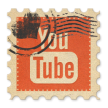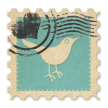Please use the Booking Services form to schedule an edit.
To get in touch for any other reason, email me at: editorbrock@gmail.com
Please note that due to the number of emails I receive, I can no longer give free advice or answer questions for writers who are not clients. Please consider my shorter service options or check out the free resources available on my blog.




Hello Ellen,I first noticed you on your YouTube channel.I enjoyed your good videos.I wonder,how does someone write a spy novel,similar to Arpeggio of Blue Steel? With what principles in mind does it efficiently? My case is I have ideas to write a novel,I want to try it. By the way,how does someone write a series of fiction books?
I would appreciate your reply.
Hi, I’m J. L. Rodriguez. I wrote a book called Sol, it’s a Sci-Fi novel. I self published and the book itself was nice: however, not the writing. The concepts are good but not the expression of them. Help!
Hi Ellen, learned so much from you on POV…. here’s a POV that has me stumped. I read and loved The Wife by Meg Wolitzer– at first it’s first person… narrator describes her life with her husband, but then also her husband’s childhood in detail [“Joe sat down at the kitchen table and ate his afternoon snack of yellow sponge cake in the moony stupified way children have, a constellation of crumbs on his lips and chin”], and others [“No one on this plane was fixated on death, like we’d all been earlier…”] and it doesn’t end there. Is this a POV taking liberties or is this an established type of narrator/POV? Perhaps a video if you can’t answer here. Thank you!
Hello Ellen,
I have watched you for some years now and I am happy to congratulate you
in what I see as a success – you are deserving for your hard work and relentless
effort – and your willingness to give something free is in part what makes you
a success story in itself….,
This question and my comment herein will be longer than I prefer – but – I am not
good at keeping it short – sometimes – forgive me I am trying to do my best.
My question is – how are you going to overcome the hurdle about editing – everyone
is going to want “you” and not want to have someone else as a go-between or
people doing a short note that you run with – that said – what can you say to overcome
or convince me that – that will work..,
I want the full package whatever that is and you in person or live in some form.
I will know the difference between you and someone else…,
Your Great!
Dan walker ( about done with my first fiction novel ).
Love my work.
Ellen! Been ages since I hopped into your Summer Boot Camp – good times! Ran into an interesting situation with a friend who put together a limited battle scene (limited = 100 participants on both sides). These types of scenes happen most often in fantasy and military (scifi or historical) themed books. In this instance, you had a force of 40-odd (bad guys – only a few named) on one side and 10 (good guys – all named) on the other.
By the time I got halfway through the scene, it was easy to lose track of casualties. It seemed like the 40-odd was actually about double that considering the kills being racked up by the good guys… I reread the entire scene and it was impossible to follow the attrition (and hence the sense of the scene).
As a board wargame designer, this was a problem I had a solution for, which I pass along to you (I know, the student always assumes the teacher doesn’t know)…
If you’re going to write a limited battle scene (defending a small group of buildings against a much larger force), do yourself a favor – draw it out! You don’t have to be an artist to draw out a ‘floor plan’ of your little action – just draw boxes and lines. Start with a single piece of paper until you’re happy – that means the drawing looks mostly like what you have in your head. Remember – nobody else has to ever see it.
Use anything to represent your opposing forces. In the case of the 10 vs 40, I suggested using 50 pieces of anything so that the pieces will be to scale to your drawing (you might need to make the drawing bigger or use smaller pieces). As a gamer, I have tons of dice – they work perfectly for this type of exercise. But Lego pieces, small toy figures from the Dollar Tree or even beans will do.
Set your forces up and walk yourself through the battle, taking notes every TIME increment – that can be every 1, 5, or 10 minutes (you’d be shocked at how much happens in 5 minutes of hand to hand combat – and how tired a human being can get). Lay pieces over (or turn them sideways) as each character dies.
As you walk it through in a visible way, you’ll be able to show – in a concrete way – the battle unfold as you write it. By the time one side or the other is victorious, your reader won’t feel lost. The reality is, the great mass (even if it’s only 40 on one side) of soldiers will have no names. But – did you ever stop to think what killing 10 people from inside a doorway as they try to force their way past your hero looks like? Bodies pile up boys and girls.
You don’t have to go into gory detail (unless that’s what you’re going for), but unless there is a frame of realism, and a sense of attrition, your readers eyes will start to glaze as your heroes seemingly kill endlessly… when there were only 40 to start with.
Hope that helps, Ellen. I know you can describe this process better than me – I found a Boot Camp entry on writing an action scene which should absolutely pair with this – but I didn’t find one by specifically detailing writing a battle scene. Thanks for all your help to ME over the years!